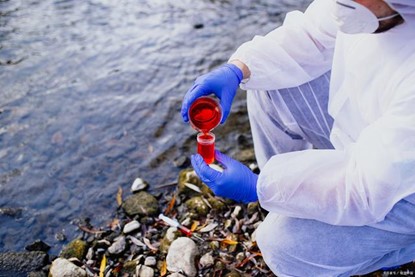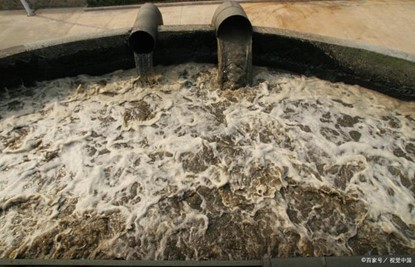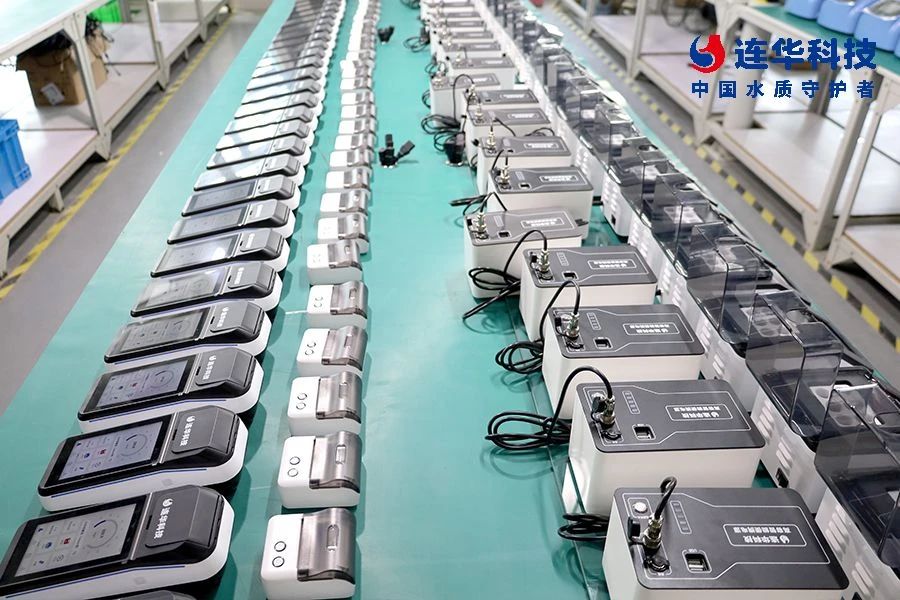Industrial wastewater includes production wastewater, production sewage and cooling water. It refers to wastewater and waste liquid generated in the industrial production process, which contains industrial production materials, intermediate products, by-products and pollutants generated in the production process that are lost with water. There are many types of industrial wastewater with complex components. For example, electrolytic salt industrial wastewater contains mercury, heavy metal smelting industrial wastewater contains lead, cadmium and other metals, electroplating industrial wastewater contains cyanide and chromium and other heavy metals, petroleum refining industrial wastewater contains phenol, pesticide manufacturing industrial wastewater contains various pesticides, etc. Since industrial wastewater often contains a variety of toxic substances, polluting the environment is very harmful to human health, so it is necessary to develop comprehensive utilization, turn harm into benefit, and take corresponding purification measures according to the composition and concentration of pollutants in the wastewater before it can be discharged.
Industrial wastewater refers to wastewater, sewage and waste liquid generated in the industrial production process, which contains industrial production materials, intermediate products and products lost with water and pollutants generated in the production process. With the rapid development of industry, the types and quantity of wastewater have increased rapidly, and the pollution of water bodies has become increasingly widespread and serious, threatening human health and safety. Therefore, for environmental protection, the treatment of industrial wastewater is more important than the treatment of urban sewage.
There are usually three types:
The first is to classify according to the chemical properties of the main pollutants contained in industrial wastewater. The wastewater mainly contains inorganic pollutants, and the wastewater mainly contains organic pollutants. For example, electroplating wastewater and wastewater from mineral processing are inorganic wastewater, wastewater from food or petroleum processing is organic wastewater, and wastewater from the printing and dyeing industry is mixed wastewater. The wastewater discharged from different industries contains different components.
The second is to classify according to the products and processing objects of industrial enterprises, such as metallurgical wastewater, papermaking wastewater, coking coal gas wastewater, metal pickling wastewater, chemical fertilizer wastewater, textile printing and dyeing wastewater, dye wastewater, leather wastewater, pesticide wastewater, power station wastewater, etc.
The third type is classified according to the main components of pollutants contained in wastewater, such as acidic wastewater, alkaline wastewater, cyanide-containing wastewater, chromium-containing wastewater, cadmium-containing wastewater, mercury-containing wastewater, phenol-containing wastewater, aldehyde-containing wastewater, oil-containing wastewater, sulfur-containing wastewater, organic phosphorus-containing wastewater and radioactive wastewater.
The first two classification methods do not involve the main components of pollutants contained in wastewater, nor can they indicate the harmfulness of wastewater.
The importance of industrial wastewater testing
Usually, the wastewater generated in our lives contains almost no toxic substances, while industrial production wastewater is likely to contain heavy metals, chemicals and other harmful substances. Discharging without treatment will not only cause serious pollution to the environment, but the company will also face fines and penalties. In serious cases, it will be ordered to suspend business and close down.
Do a good job in industrial wastewater testing, control the concentration and discharge of pollutants in the water before the wastewater is discharged to not exceed the prescribed limits, protect water resources, and reduce the impact on the environment. Hello, I am good, everyone is good!
The standards for industrial wastewater discharge cover a variety of pollutants, including COD, heavy metals, BOD, suspended solids, etc. The emission standards for different industries are also different. Enterprises can refer to the industrial water pollutant emission standards issued by the Ministry of Ecology and Environment.
The importance of industrial wastewater testing is mainly reflected in the following aspects:
1. Protecting the environment: Direct discharge of industrial wastewater without treatment will cause great damage to the environment, such as water pollution and soil pollution. By testing industrial wastewater, the degree of pollution and composition of wastewater can be effectively monitored, providing a scientific basis for governance and prevention.
2. Protecting human health: Industrial wastewater often contains toxic and harmful substances, such as heavy metals and organic pollutants. These substances pose a great threat to human health. Through industrial wastewater testing, the presence and concentration of these harmful substances can be effectively monitored, providing a basis for formulating governance plans, thereby protecting human health.
3. Promoting sustainable industrial development: With the increase of environmental awareness, more and more companies have begun to pay attention to environmental governance. By testing industrial wastewater, companies can understand their own wastewater discharge, provide scientific support for improving production processes and reducing environmental pollution, and thus promote sustainable industrial development.
Industrial wastewater testing items and indicators
Wastewater testing items mainly include chemical oxygen demand (COD), biological oxygen demand (BOD), suspended solids (SS), total phosphorus (TP), ammonia nitrogen (NH3-N), total nitrogen (TN), turbidity, residual chlorine, pH and other indicators. These indicators reflect the pollution of different aspects of wastewater, such as organic matter, microorganisms, nutrients, etc. By detecting and analyzing these indicators, we can understand the degree and type of wastewater pollution, and provide a scientific basis for wastewater treatment and discharge.
Common industrial wastewater testing methods
Common industrial wastewater testing methods include chemical analysis, biological analysis and physical analysis. The characteristics and applications of these methods are introduced below.
1. Chemical analysis method
Chemical analysis is the most commonly used method in industrial wastewater testing. This method mainly determines the content of various substances in wastewater through chemical reactions and quantitative analysis. Chemical analysis methods include titration, spectrophotometry, chromatography, etc. Among them, titration is one of the most commonly used chemical analysis methods, which can be used to determine the ion concentration, pH, heavy metals and other indicators in wastewater; spectrophotometry is a method of determining the concentration of a substance by measuring the degree of absorption or scattering of light by a substance, and is often used to determine indicators such as organic matter and ammonia nitrogen in wastewater; chromatography is a separation and analysis method that can be used to determine organic matter, inorganic matter, polycyclic aromatic hydrocarbons and other substances in wastewater.
2. Bioanalysis
Bioanalysis is the use of the sensitivity of organisms to pollutants to detect harmful substances in wastewater. This method has the characteristics of high sensitivity and strong specificity. Bioanalysis includes biological testing and biological monitoring. Among them, biological testing is to determine the toxicity of pollutants in wastewater by culturing organisms, and is often used to determine organic matter, heavy metals and other substances in wastewater; biological monitoring is a method of reflecting environmental pollution by monitoring the physiological and biochemical indicators of organisms, and is often used to monitor organic matter, heavy metals and other substances in wastewater.
3. Physical analysis
Physical analysis is the use of the physical properties of substances to detect harmful substances in wastewater. This method is easy to operate, fast and accurate. Commonly used physical analysis methods include specific gravity method, suspended matter determination method and colorimetry method. Among them, specific gravity method is to determine the content of substances in wastewater by measuring the density; suspended matter determination method is to determine the water quality by measuring the content of suspended matter in wastewater; colorimetry is to determine the content of organic matter, heavy metals and other substances by measuring the depth of wastewater color.
3. Summary
Industrial wastewater detection is one of the important links in environmental protection and governance, and it is of great significance to protect the environment, protect human health and promote sustainable industrial development. Commonly used industrial wastewater detection methods include chemical analysis, biological analysis and physical analysis, each of which has its own characteristics and scope of application. In practical applications, it is necessary to select appropriate detection methods according to specific circumstances to ensure the accuracy and reliability of the detection results. At the same time, it is necessary to strengthen the formulation and implementation of wastewater treatment measures to reduce the harm of wastewater to the environment and human health.
What are the advantages of spectrophotometry for water quality detection?
At present, spectrophotometry is one of the commonly used detection methods in water quality detection work, especially in the determination of water samples with relatively low content, it has the advantages of simple operation, high accuracy and high sensitivity. There are many types of spectrophotometers, which are divided into visible spectrophotometers, ultraviolet visible spectrophotometers and infrared spectrophotometers according to the wavelength range of the light used. Spectrophotometry is a commonly used analytical method in water quality detection. Its basic principle is to determine the content of the target substance in the solution by measuring the degree of absorption of the solution to light of a specific wavelength. Spectrophotometry has the following advantages:
1. High sensitivity
Spectrophotometry has a high detection sensitivity for target substances and can perform accurate analysis and measurement in a low concentration range. This is because when the light passes through the solution, the light intensity absorbed by the target substance is proportional to the concentration of the target substance, so the low concentration of the target substance can be measured with high precision.
2. Wide linear range
Spectrophotometry has a wide linear range and can perform accurate measurements in a large concentration range. This means that spectrophotometry can be applied to both low-concentration and high-concentration sample analysis, with good applicability and flexibility.
3. Fast and efficient
Analysis results can be obtained in a short time. Compared with other analytical methods, spectrophotometry has a simpler operation process and faster analysis speed, which is suitable for scenarios where results need to be obtained quickly.
4. High selectivity
Spectrophotometry can achieve selective detection of target substances by selecting appropriate wavelengths. Different substances have different absorption characteristics at different wavelengths. By selecting appropriate wavelengths, interference from interfering substances can be avoided and the selectivity of measurement can be improved.
5. Portability and real-time performance
Spectrophotometry can achieve on-site rapid detection through a portable multi-parameter water quality detector, which has good portability and real-time performance. This makes spectrophotometry widely used in scenarios where results need to be obtained quickly, such as field environmental monitoring and water pollution investigation.
Lianhua Technology is a Chinese manufacturer with 42 years of experience in the production of water quality testing instruments. In 1982, it developed the COD rapid digestion spectrophotometry method, which can detect the accurate value of COD in wastewater within 20 minutes, with a small amount of reagents, simple and convenient operation, and is very popular in laboratories. With continuous research and development and upgrading, Lianhua Technology can now provide ammonia nitrogen instruments, total phosphorus instruments, total nitrogen instruments, nitrate/nitrite instruments, suspended solids meters, turbidity meters, residual chlorine meters, heavy metal meters, etc., as well as various supporting reagents and accessories. Lianhua Technology has a rich product range of water quality testing instruments, good product quality, and timely after-sales service. Welcome to consult!
Post time: Aug-29-2024







